Pablo Amaringo (1938-2009) was a painter from Pucallpa in Peru, whose paintings are all inspired by his experiences with ayahuasca. Amaringo originally worked as a vegetalista which is a traditional word for a shaman in Latin America who works with plants and vegetables to cure physical and spiritual illnesses. He was also part of the mestizo tradition of healing, which means “mixed”, as these mestizo populations identify themselves as having mixed descent. Although he produced many paintings, he lived in poverty for a very long time. But then the ethnobotanist Dennis McKenna (brother of Terence McKenna) travelled to Peru and made the Western world aware of his work, increasing his recognition, fame and fortune. McKenna at the time was doing research for his doctoral thesis on the botany, chemistry and pharmacology of ayahuasca, but at the time little was known about it.
Thanks to the work of McKenna, we now know that ayahuasca works by combining a root bark (mimosa hostilis, for example, which contains the DMT) with a plant which acts as an MAOI (such as harmaline, Syrian rue or banisteriopsis caapi). If you were to swallow the root bark by itself, nothing would happen. Your body produces an enzyme called MAO which makes the DMT inactive when orally taken, so if you take an MAO inhibitor (MAOI) along with the DMT, then the mixture becomes orally active. Ayahuasca is thousands of years old and it’s a mystery how the indigenous people of Peru found the right combination of plants out of the thousands of species that exist in the Amazon.
When Amaringo met McKenna he told him about some of his circumstances, how in his late thirties he suffered from a serious heart problem and doctors told him that his life would likely be shortened by decades. The doctors said there was nothing he could do about it. In desperation, Amaringo sought out a shaman in order to drink ayahuasca, which the natives consider the most effective medicine. Amaringo then told in detail his experience to McKenna.
He said that during the session he was encountered by “spirit doctors”. He found himself in an operating room, surrounded by high-tech machines and doctors in white coats. The doctors opened his chest and removed his heart, still beating, all while Amaringo watched in terror, convinced that he was about to die. But the doctors were fixing his heart right in front of him, then put it back in his chest – after the experience, he never had any further heart problems.
Whether the ayahuasca itself physically healed him is debatable, but it may have been that the experience was so meaningful and powerful that some sort of placebo effect was going on. However he was cured, it was pretty miraculous. Amaringo also got another message from the ayahuasca and that was to become a shaman in order to maintain his own vitality, as well as the vitality of others.
In the book The Shaman and Ayahuasca, which contains Amaringo’s last interview before he died, Amaringo tells the interviewer Don Jose Campos (another practising shaman) that crowds of people came to him every day to be healed. So he drank every day. The shaman in the ceremony always drinks ayahuasca, along with everyone else. Amaringo would also travel to places like Huanuco, Cuzco and Iquitos in order to heal people. Amaringo says in the interview that he encountered spirits in every one of his sessions and that he now believes that everything has its own kind of spirit. The spirits came in the form of angels, mythological creatures, animals (the jaguar and snake especially) and princes.
At this point, Amaringo had already been painting, but his paintings were not based on his ayahuasca experiences, they were just based on everyday sights: native people, family, landscapes, the jungle, animals etc. Another ayahuasca researcher, Luis Eduardo Luna, who was with McKenna at the time, suggested that Amaringo had a good technique and that he should try to translate his experiences into paintings. Amaringo was doubtful at first. Luis and Dennis visited Amaringo the next morning to find out that he had been painting all night, trying to capture his ayahuasca visions. He produced three paintings which, although they were simple, were completely different from his other paintings. He seemed to remember details from his experiences even though they happened years ago and the imagery in the painting seemed to come from a different universe. Dennis and Luis suggested that Pablo sign his name on the paintings in order to get his name known. The next morning Amaringo showed Dennis and Luis three more paintings, this time they were even more colourful and intricate. This began Amaringo’s career as one of the most renowned visionary artists of the 20th century.
In the years to come, his paintings would continue to become more sophisticated and detailed, but the source of inspiration was always the same – the ayahuasca world. Collections of Pablo’s work and an explanation of the themes involved in them can be found in the books Ayahuasca Visions: The Religious Iconography of a Peruvian Shaman and in The Ayahuasca Visions of Pablo Amaringo. Common themes in these paintings seem to be helper beings, snakes, the double helix, flying saucers, the inside of religious buildings, alien cities and a psychedelic, neon-coloured jungle. Here are some examples of his paintings:
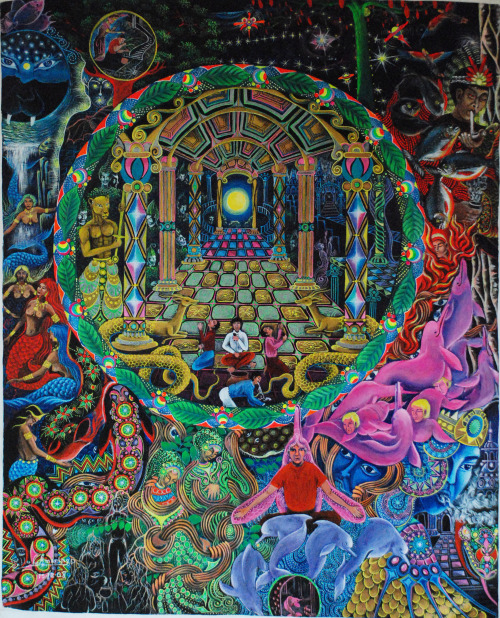
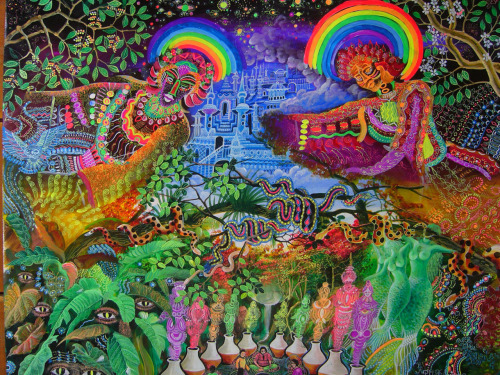
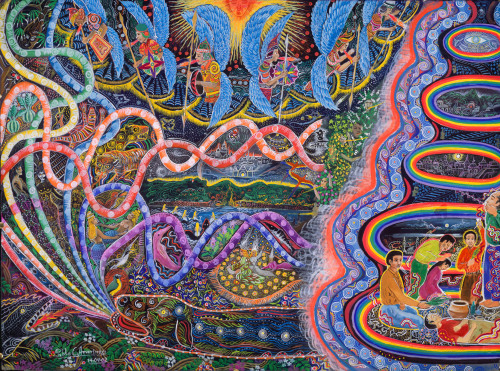
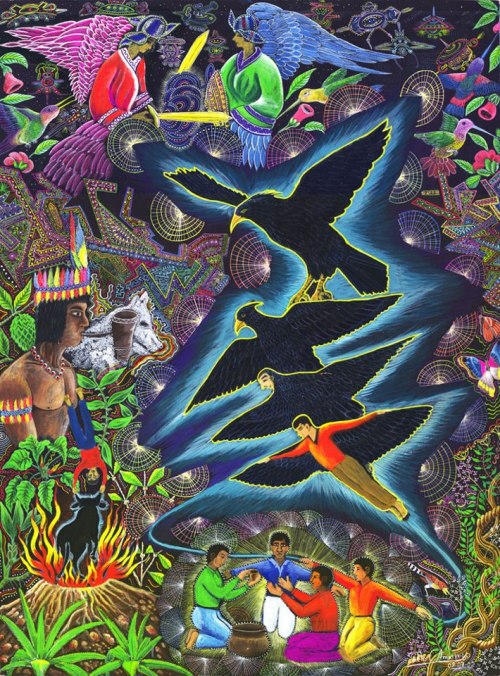
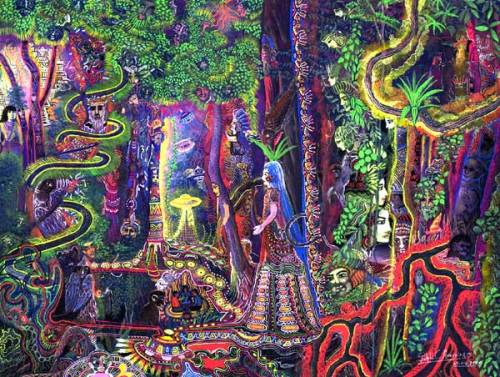


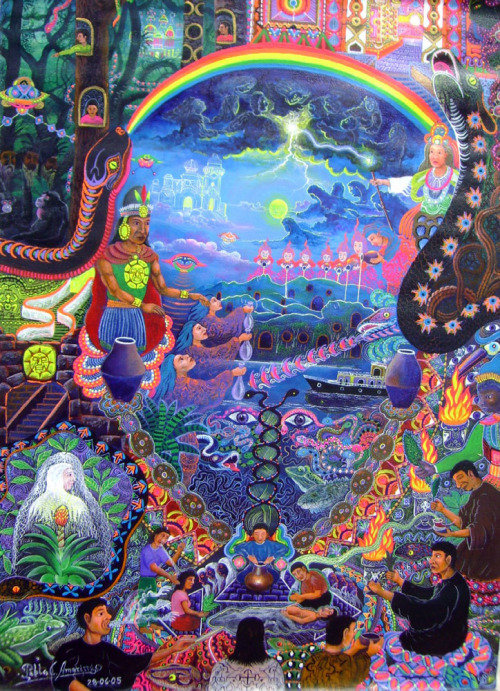
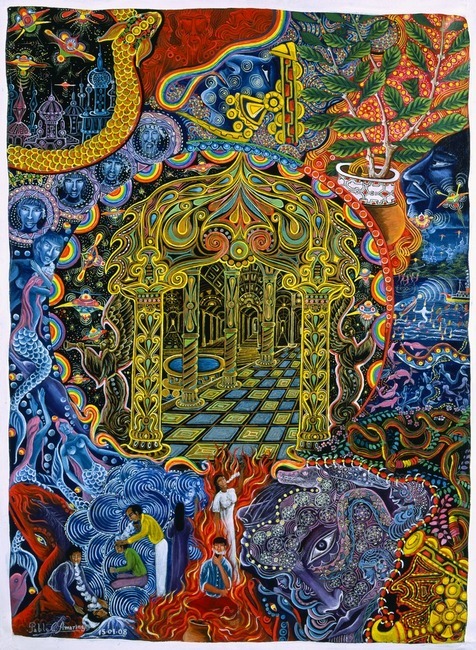

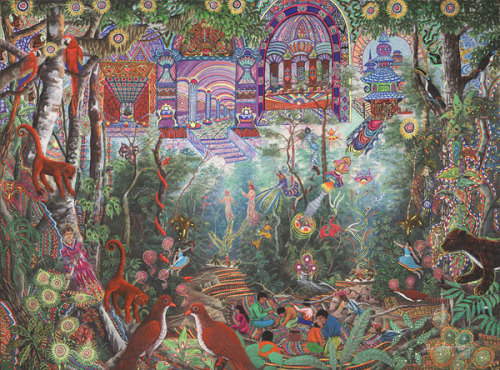
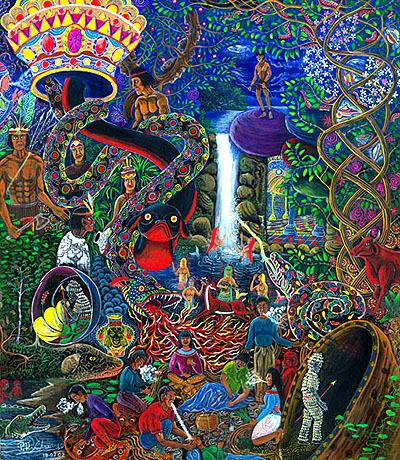

Sublime!